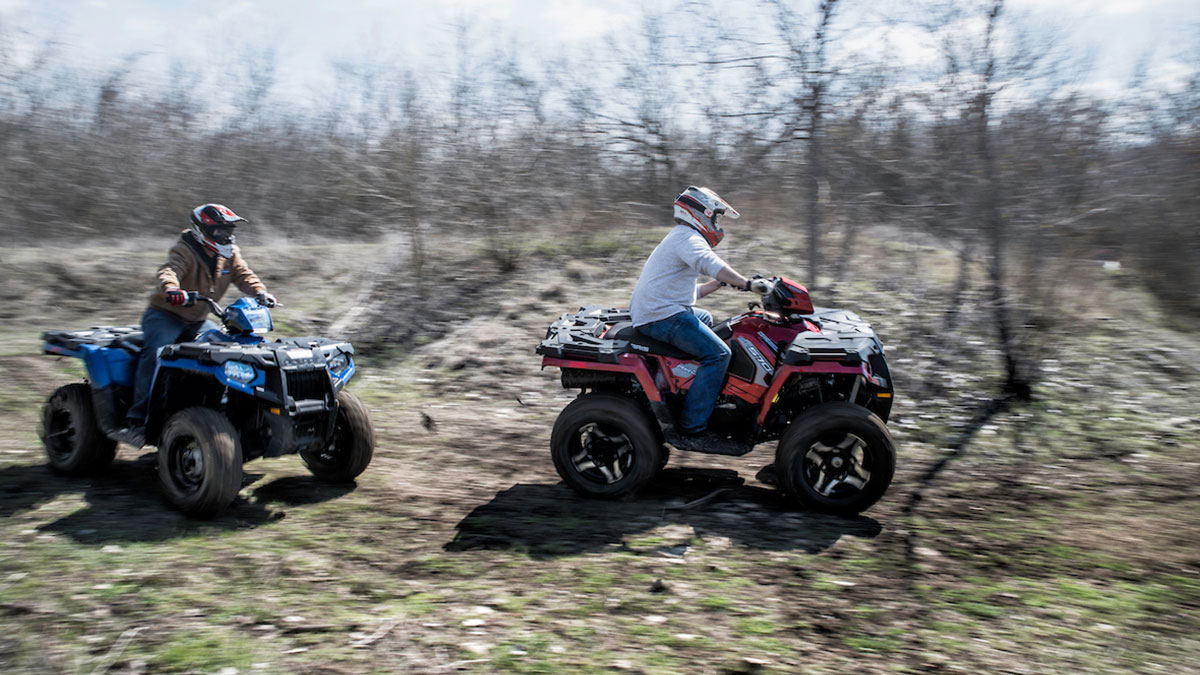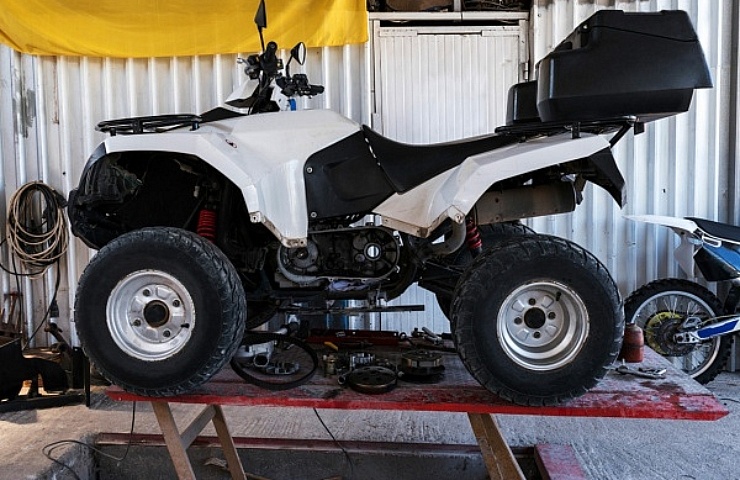ATV Fanatics Join: Study the Heart-Pounding Globe of Off-Road Bliss
Wiki Article
ATV Riding Techniques: Mastering the Art of Off-Roading

Body Positioning
To effectively navigate via difficult off-road surface, it is important for ATV riders to constantly preserve correct body placing. Preserving the correct body setting while riding an ATV not only boosts control and stability yet also ensures the motorcyclist's safety. By embracing the proper body placing strategies, bikers can effectively disperse their weight, boost their equilibrium, and minimize the threat of injuries or crashes.One secret aspect of correct body placing is maintaining the feet on the foot fixes. Positioning the feet on the foot fixes permits the cyclist to maintain security and control over the ATV. The rider's knees ought to be slightly bent, providing a slight suspension to soak up shocks and preserve balance. Furthermore, the motorcyclist's top body must continue to be kicked back and adaptable, allowing for fast and seamless movements when essential. This consists of keeping a light grasp on the handlebars to keep control without extreme pressure.
Additionally, the rider's eyes need to constantly be focused in advance, scanning the terrain and preparing for any type of barriers or changes in the path. By maintaining a forward gaze, cyclists can make split-second decisions and respond properly to testing terrain.
Throttle Control
Building upon the importance of correct body positioning for ATV cyclists, understanding throttle control is an important ability that allows riders to effectively maneuver with various off-road surfaces. Strangle control describes the capability to control the amount of power supplied to the ATV's engine. By understanding just how to control the throttle, cyclists can make sure a controlled and smooth velocity, permitting them to browse obstacles with accuracy.Among the basic facets of throttle control is discovering to regulate the throttle efficiently. Abrupt or jerky motions can cause the ATV to shed traction or come to be unpredictable, making it challenging to maintain control. Instead, bikers ought to aim for gradual and purposeful throttle inputs, especially when traversing challenging surfaces. This method permits the ATV to preserve a steady speed and provides far better grip, minimizing the danger of accidents.
In enhancement to smooth inflection, cyclists must also learn exactly how to stabilize the throttle with various other riding strategies, such as body positioning and braking. For instance, when climbing up high hills, motorcyclists need to apply enough throttle to maintain momentum without causing or overpowering the atv wheel spin. Similarly, when descending steep inclines, bikers must utilize the throttle in combination with appropriate body stopping and positioning to preserve control and stop the ATV from sliding or tipping over.

Braking Techniques
A crucial facet of ATV riding techniques is mastering effective stopping methods. It is essential to keep in mind that harsh stopping with just the front brake can cause the ATV to pitch onward, potentially leading to loss of control or even flipping over. By mastering these braking strategies, you can enhance your ATV riding skills and ensure a delightful and risk-free off-roading experience.Cornering Strategies
One essential facet of mastering ATV riding strategies is comprehending reliable cornering techniques. Cornering on an ATV can be tough, but with the appropriate methods, cyclists can browse turns safely and successfully. The secret to successful cornering is to maintain control of the ATV while making best use of grip and reducing the danger of tipping over.To carry out an appropriate cornering technique, riders need to come close to the turn at a proper speed, guaranteeing they are not going as well quick or too slow-moving. It is vital to change the body weight towards the within the turn, leaning right into it to keep balance and stability. This assists to counterbalance the centrifugal pressure and maintains the ATV upright.
Additionally, motorcyclists should keep their eyes concentrated on the departure factor of the turn rather than the instant course ahead (ATV). This permits smoother and more precise guiding, as it helps the cyclist anticipate any barriers or modifications in terrain
Moreover, appropriate throttle control plays a substantial duty in cornering. Riders should regulate the throttle efficiently, staying clear of unexpected velocities or slowdowns, which can create loss of control.
Uphill and Downhill Riding
When navigating off-road terrain, ATV cyclists should grasp the strategies for uphill and downhill riding to keep control and make sure safety and security. Uphill riding calls for a combination of Website balance, throttle control, and weight circulation. As cyclists rose steep inclines, they need to lean forward to change their weight towards the front of the ATV, which increases traction on the front wheels and stops the automobile from flipping backward. ATV. Additionally, you can check here preserving a constant throttle and preventing unexpected velocity or slowdown aids to stop the ATV from shedding momentum or getting stuck. Downhill riding, on the other hand, needs cyclists to lean back and move their weight in the direction of the rear of the ATV. This aids to keep stability and stop the lorry from turning forward. It is vital to utilize the brakes sparingly and use them progressively to stay clear of locking the wheels and blowing up. In addition, bikers should pick the course with the least challenges, as navigating downhill can be a lot more challenging because of the increased rate and lowered grip. By mastering the techniques for uphill and downhill riding, ATV bikers can confidently tackle different off-road terrains and take pleasure in a exciting and secure adventure.Verdict
Finally, grasping the art of ATV riding requires a mix of body positioning, throttle control, stopping methods, and reliable cornering. Uphill and downhill riding reference likewise call for certain abilities to browse securely. By applying these strategies, riders can improve their off-roading experience and improve their general control and safety on the ATV.ATV Riding Techniques: Understanding the Art of Off-Roading is a detailed guide that digs into the intricacies of grasping the abilities required for off-road ATV riding. Whether you are a novice or a skilled biker, ATV Riding Techniques: Grasping the Art of Off-Roading supplies important guidance to aid boost your off-road ATV riding abilities to the next level.

Report this wiki page